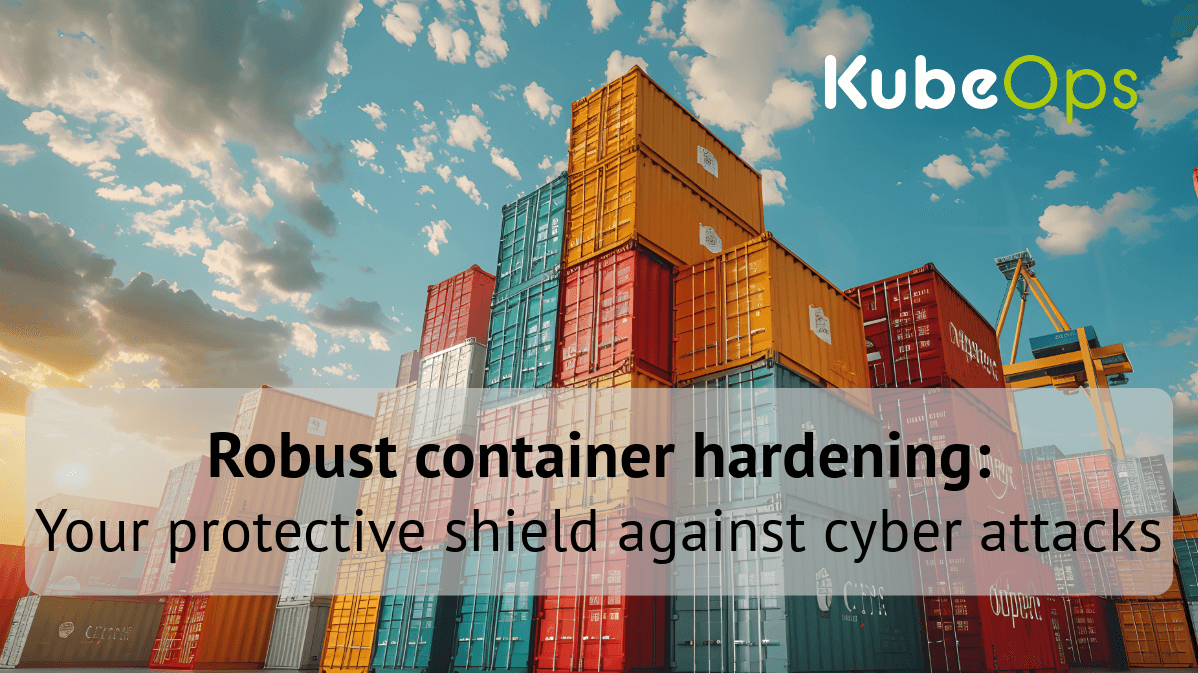Blogs
Robust Container Hardening: Your Protective Shield Against Cyber Attacks

Introduction:
In today’s threat landscape, containers are an indispensable tool for agile and scalable IT infrastructures. However, they also introduce new challenges: vulnerabilities in container images or misconfigured runtime environments can create attack surfaces that cybercriminals can exploit.
For you as a decision-maker, this means that without consistent container hardening, you not only expose your IT infrastructure but also your entire supply chain to significant risks. This article explains how container hardening works, which measures are essential, and how to build a secure foundation for your cybersecurity strategy.
Why is container hardening so important?
Containers offer companies tremendous advantages: flexibility, scalability, and faster deployment of applications. However, these benefits come with risks. Misconfigurations, outdated base images, or insufficiently protected permissions make containers attractive targets for attackers.A prominent example is the attack on Kubernetes clusters through insecure container images. Publicly accessible images containing hidden malware were used in this case. Such incidents underscore the importance of a robust hardening strategy to mitigate these risks.With consistent container hardening, you can achieve:- Reduction of attack surfaces: Minimalistic base images and the removal of unnecessary components reduce potential vulnerabilities.
- Faster incident response: Isolated containers with restricted permissions prevent the spread of attacks within your infrastructure.
- Compliance with regulations: Measures like signed container images and security scans help meet legal requirements, such as the NIS2 directive.
Key Steps to Container Hardening
Effective container hardening involves technical measures that work together to optimally protect your IT environments.
-
Use minimalistic base images:
- Employ base images containing only essential components to reduce attack surfaces.
- Regularly update these to fix known vulnerabilities.
-
Set security policies for permissions:
- Restrict containers to the minimum required permissions.
- Apply principles like "least privilege" to prevent unauthorized access.
-
Automated security scans:
- Integrate tools like Trivy or Clair into your CI/CD pipeline to check container images for vulnerabilities.
- Avoid deploying unscanned or unsigned images in production environments.
-
Control network access:
- Implement Kubernetes network policies to regulate communication between containers and protect sensitive resources.
-
Isolation through Kubernetes namespaces:
- Use namespaces to separate applications and limit the spread of attacks.
Tools to Support You
Implementing these measures can be significantly simplified with specialized tools. Here are some examples:
- Trivy: A security scanner that detects vulnerabilities in container images and configurations.
- Cosign: Enables the signing and verification of container images to ensure their integrity.
- Falco: Monitors runtime environments for anomalies and potential threats.
Strategic Benefits for Your Business
Container hardening not only provides security but also improves efficiency. With a well-thought-out strategy, you can:
- Optimize IT resources: Fewer vulnerabilities mean less effort for patch management.
- Shorten response times for incidents: Isolated containers can be identified and fixed faster.
- Strengthen trust with partners: A secure supply chain demonstrates that your company takes cybersecurity seriously.
Conclusion:
As an IT decision-maker, you are responsible for embedding container hardening as a core component of your cybersecurity strategy. With minimalist design, automated scans, and clear policies, you build a robust foundation to minimize attack surfaces and respond quickly to security incidents.
Container hardening is not just a technical process—it is a strategic decision that future-proofs your company and makes your supply chain more resilient to threats. Take this opportunity to sustainably protect your IT infrastructure and position yourself as a leader in cybersecurity.

